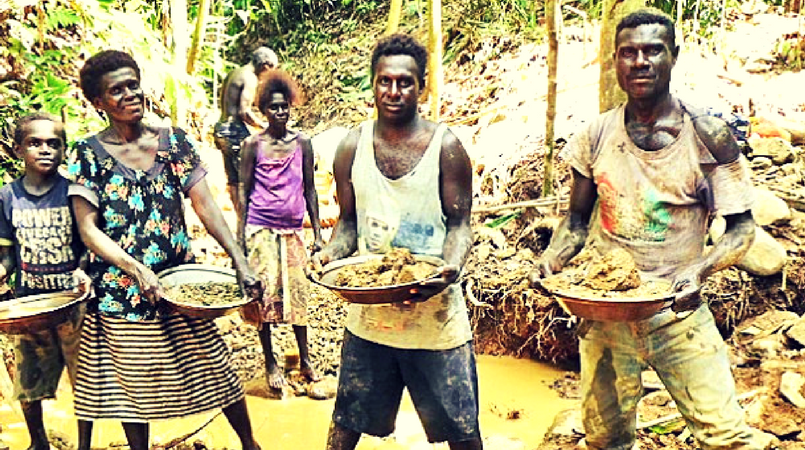
Alluvial mining activities in the country are largely unregulated.
The PNG Extractive Industries Transparency Initiative revealed this in its 2014 report.
It says this leaves authorities and stakeholders with limited information about this segment of the mining industry.
The report stated that alluvial mining accounted for 120 thousand ounces of gold, representing at least 6 percent of the total gold mined in PNG, and K373 million in export revenue.
The Mining Act 1992 allows people to mine for alluvial minerals on their own land by non-mechanical means without the need for mining license. Thus, the sector is largely unregulated because 90 percent of alluvial miners in PNG use rudimentary sluice boxes and gold panning dishes.
What’s more, there is limited information about its size, but the Mineral Resources Authority estimates that there are up to 80-thousand small scale miners in this category.
To date, MRA has held trainings for over 4 thousand small scale miners in Wau, Morobe Province, as more tend to conduct their activities using powered machinery and so require Alluvial Mining Lease or Mining Lease for alluvial purposes.
In 2014, there were 183 current Alluvial Mining Leases and 136 Mining Leases for alluvial purposes.
Alluvial miners sell their gold to traders, who then on-sell to licensed exporters, regulated by the Bank of PNG.
PNGEITI Head of National Secretariat, Lucas Alkan, said alluvial mining and associated activities contribute to the economic wellbeing of a good number of people living in remote parts of the country.
Alkan said this warrants putting in place strong coordination and regulatory mechanisms to keep track of opportunities and challenges that someone engaged in alluvial mining is faced with.
He said taking an inclusive government approach in regulating different facets of the mining industry is important and fair to every participant.
(Picture: Papua New Guinea Mine Watch)
